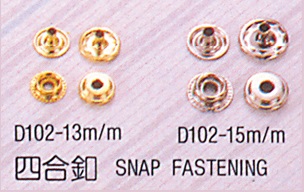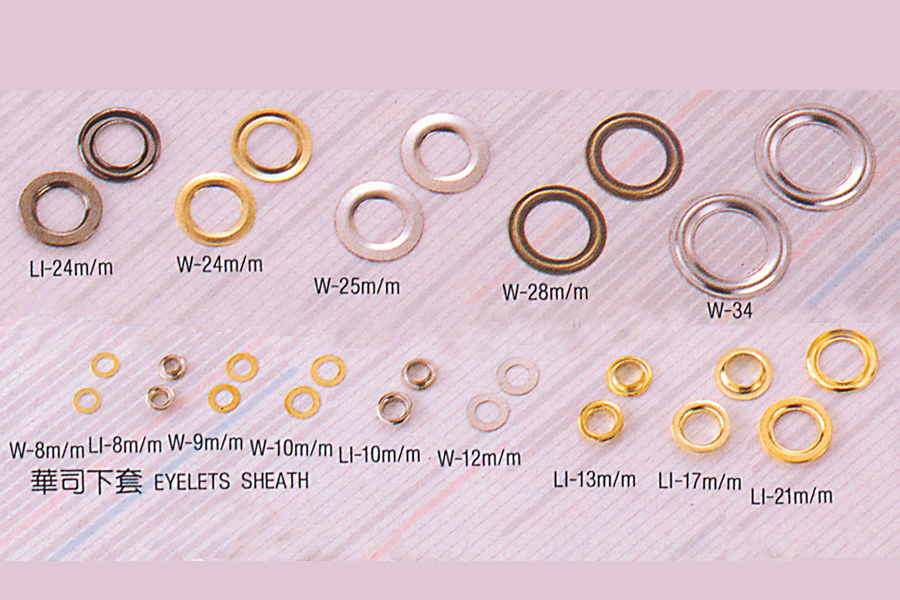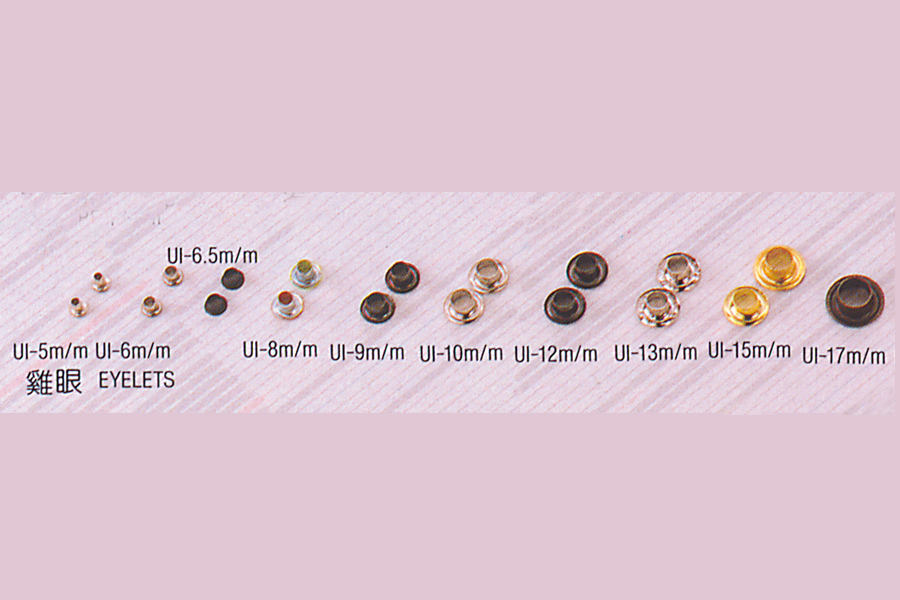Ring Spring Type Snap
 Snap fastening is a special hardware accessory that is often used on garment products for fixation and decoration. It consists of four interconnected metal circles forming a square or diamond-shaped structure, hence the name "snap fastening".
Snap fastening is a special hardware accessory that is often used on garment products for fixation and decoration. It consists of four interconnected metal circles forming a square or diamond-shaped structure, hence the name "snap fastening".
Snap fastening is usually made of brass, aluminum alloy, stainless steel and other materials, which is corrosion-resistant and stable. They are designed so that garments can be fastened and closed by inserting a button at one end into a loop at the other end. This structure makes snap fastening very convenient and strong to use, and is often used in the opening and closing parts of jackets, coats, vests and other ready-to-wear products.
In addition to ready-made clothing products, snap buttons are also commonly used in handbags, backpacks, leather goods and other products, used to fix straps or decorative parts. They can be metallic, electroplated or painted to suit the design style and color matching needs of different products.
The design and material selection of snap fastening are crucial to ensuring the quality and performance of garment products. Manufacturers should ensure that the size and structure of snap fasteners comply with standards and provide appropriate surface treatment to increase their texture and durability. At the same time, brands and designers can also customize buckles of specific shapes, materials and colors according to the needs and styles of the products, so that they can perfectly match the products and add to the uniqueness and fashion of the products.
Wide application range of snap fastening: As a practical hardware accessory, snap fastening has a wide range of applications. In addition to being common in ready-to-wear products and leather goods, they can also be used on a variety of products such as outdoor products, backpacks, handbags, tents, etc. to fix and connect various components.
Different shapes and sizes: Although generally, snap fastening is a square or diamond-shaped structure composed of four connected rings, it can actually be designed into other shapes according to needs, such as three-button fastening or five-button fastening. At the same time, snap fastening also comes in a variety of sizes, from small and delicate to large and sturdy, suitable for products of different sizes.
Color and surface treatment: Snap fastening can present different colors through surface treatments such as electroplating or painting to match the overall design style of the garment or product. This allows designers to use snap buttons more flexibly to create diverse fashion effects.
Durability and safety: It is very important for manufacturers to ensure the durability and safety of snap fastening. Manufacturers should choose high-quality materials and production processes to ensure that the four-button buckles are not easy to rust or break during long-term use. They should also ensure the locking properties of the four-button buckles to avoid affecting the quality of the product due to loosening or falling off of hardware accessories. use.
Cross-application: Sometimes designers will combine multiple snap buttons together to form a more complex design, adding to the uniqueness and beauty of the product. This cross-application can be achieved by changing the snap buttons of different sizes, colors and materials to create a more diverse design effect.
Overall, snap fastening, as a common and practical hardware accessory, plays an important role in the design of fashion products and other products. Manufacturers and designers should pay attention to the functionality, beauty, durability and safety of the product, choose suitable snap buttons to meet consumer needs, and bring more value and competitiveness to the product.
Choose the appropriate snap fastening: When choosing snap fastening, manufacturers and designers should choose the appropriate style and material based on the use and characteristics of the product. For example, for outdoor products that require high strength and durability, you can choose snap buckles made of stainless steel or high-strength alloys.
Quality assurance: Snap fastening is one of the important accessories of the product, and quality assurance is crucial. Manufacturers should establish strict quality control standards and conduct product inspection and testing to ensure that snap buttons comply with relevant standards and regulations.
Application innovation: In addition to traditional garments and leather products, the application of snap fastening can also be continuously innovated. For example, some designers apply snap fastening to different fields such as handicrafts, home accessories, pet supplies, etc. to add fashion and practicality to the products.
Joint design: In some special cases, brands and designers may work with hardware manufacturers to design snap fastening. Such cooperation can combine the creativity of designers with the production technology of hardware manufacturers to create more unique and differentiated snap button products.
Regional characteristics: The culture and style of different regions will also affect the design and application of snap buttons. For example, some areas may prefer traditional style snap fastening, while others may prefer a contemporary style design. Therefore, manufacturers should choose suitable snap fastening designs based on local culture and consumer preferences.
In general, snap fastening, as a common and practical hardware accessory, is widely used in different product fields. Manufacturers and designers should pay attention to product features, quality and application innovation, choose suitable snap fasteners to meet consumer needs, and achieve success in the market. At the same time, keeping pace with the times and designing products according to fashion trends and consumer needs will help improve the competitiveness and market position of products.
Customized snap fastening: As consumers pursue personalization and uniqueness, some brands and designers provide customized snap fastening services. Consumers can customize buckles of specific shapes, materials, colors and surface treatments to create unique products based on their needs and preferences.
Special functions of snap fastening: In addition to serving as decoration and fixing functions, snap fastenings can also have other special functions. For example, some snap buttons may be equipped with anti-theft features that can be used to securely secure handbags or backpacks. In addition, some snap buttons may be designed with a quick opening and closing mechanism, making the product more convenient and practical.
Used in sports and outdoor products: snap buttons are also widely used in sports and outdoor products. For example, using strong snap buckles in mountaineering bags or tents can ensure the stability and reliability of the product in harsh environments. At the same time, the four-button design in sports shoes and clothing can also provide better stability and comfort.
Environmentally friendly materials and designs: As environmental awareness increases, manufacturers and designers are paying more and more attention to choosing environmentally friendly materials and designs. For example, choose recyclable materials to make snap fastening, or use low-carbon and environmentally friendly production processes to reduce the impact on the environment.
Brand logo and packaging: Snap fastening can also be used as part of the brand logo, embedding the brand's logo or name on the snap fastening to increase brand recognition. In addition, packaging is also an important part of promoting products. Uniquely designed packaging can attract consumers' attention.
In general, snap fastening is a common and versatile hardware accessory, and its applications and innovations are constantly enriched and expanded. Manufacturers and designers should constantly pay attention to market demand and consumer preferences, provide diversified design choices, and continuously improve product quality and functions to meet the needs of different users. At the same time, adhering to environmental protection and sustainable development will help enhance the market competitiveness and sustainability of products.


